The Hook Up
This scene
“The Duo Discus replaced the Janus as Schempp Hirth's high-performance two-seater trainer. Although it shares its name with the highly successful Standard Class Discus, any resemblance is only superficial. It first flew in 1993 and is still in production at the factory in Orlican in the Czech Republic. It has a 20-metre four-piece wing that is slightly swept forward so that the rear pilot is close to the centre of gravity. Its best glide ratio was measured as 44:1. An optional 'turbo' retractable two-stroke engine can be specified for extended gliding sessions.”
“44 :1” translates in real speak as: A reasonable 3000 AGL tow on a “booming” day and then drifting about beneath cloud streets for hours on end with vultures and eagles gazing from your wingtip as Debussy plays stereophonically in your ears. "Clair de Lune" at cloud base, another of life's moments lost to memory . . .
Sorry, where was I? Oh yeah, procedures -
The “tow captain” gets a thumbs up from the Discus’ pilot for tow attachment, or “hook up”, whilst the tow pilot, with engine idling, checks his mirror to monitor the progress.
One can see the half-full fuel level in the sight-gage through the cub’s skylight.
This particular farmer was constantly at odds with the operation due to the noise bothering his animals and tow-ropes falling from the sky onto his property. For that reason, I always turned sharply when departing to the East and always dropped the rope at the other end of the field. Not long before, the farmer had read another pilot the riot act, vowing to never return another two-rope dropped onto his property as the lackadaisical flyer, dropping the rope before landing, would from time to time deposit it on the farmer’s property. I figured, “there goes the tow-rope, we’ll never get it back now.”
With a dead engine and no time to perform the usual emergency checks, I put the Cub into a radically steep, nose dive, making two 360 degree steep turns from around four hundred feet with a wind-milling propeller. I was far too low to pull the nose up and to stop the prop as this would have undoubtedly resulted in a fatal stall. With the wind-milling fan severely braking my forward speed and keeping me close to the stall, I rolled out of the second steep turn, with eyes glued to the starboard wing-tip now caressing the grass, (wingtip clearance becomes habit while spraying crops) just barely rolling out level the same instant the Cub’s wheels touched the grass runway. It was a perfect wheel landing. The momentum from the high landing speed carried me up the hill to the middle of the flying field where, along with the prop, I stopped directly in front of the fuel pumps. The maneuver was so adroit, no one at the operation realized there had been a problem.
Mopping my sweat-bathed forehead, I looked up at the sight-gage on the wing root to find the cork ball stuck halfway up the glass. Imagination had supplied nonexistent, red fuel beneath the small float indicator. Reaching up, I gently tapped the glass; instantly the cork ball dropped to the bottom of the sight-gage - after all that vibration. After refueling the Cub, I drove over to the farmer’s house hoping against hope he would let me recover the rope. I was surprised to say the least when he met me at the door with the coiled line. Handing me the neat coil, he said, “I saw the problem you had, how close it was and how that i***t wouldn’t get off tow, I understand”. I thanked him and went back for my next tow, wondering how a farmer knew so much about flying. After that, I began judiciously counting the number of tows - like there wasn’t a fuel gage. The ring knocker made a perfect pattern and brought the Lark in for a perfect landing. I told him, no more tows while I was managing.
When I retold the tale later, the only comment was, “why did you bother waggling your wings? You should have cut him loose the second you lost the engine.” Attempting to save a tow-rope might have cost me my life, but such stories are common in the professional aviator’s history.
The kits are both of course from Revell Germany in 1/32 scale. Ya’ sure, I can see the German Duo Discus, but the all-American Cub? There’s irony in there somewhere. The girl
is a very expensive, (aren’t they all?) white metal casting from Aurora Figures Japan, no relation to the former American company. The Strombecker ground crew figures were grossly overpriced for what were once plastic, kid’s toys. There were five racing figures total, but only two passed position muster and thankfully, that was all I needed. The pilot figures are current styrene, race-car driver creations, except the one wearing the international orange flight suit.
He’s one of those rubbery creations that cannot be handled after painting as, for reasons unknown, the paint never really dries. This presented a challenge when squeezing him into the Duo Discus’ front cockpit. The five figure’s have nicely detailed heads, (found them on e-Bay, where else? If e-Bay goes, my modeling days are pretty much over) that came from China for a very reasonable price (see previous reference to e-Bay). They all had baseball hats molded-on, but fixed baseball caps are pretty much de rigueur for the soaring crowd anyway. I never thought modeling would turn me into a headhunter - literally. Seatbelts were made from a fabric Bandaid that lent a nice textured effect. These were painted black with silver release buckles and adjustments.
The Super Cub kit is nicely detailed, right down to the lifting handles and control cable fairings. The cockpit’s frame tubing is replicated from the full scale counterpart. As with its big brother, the kit’s engine assembly is also supported by a delicate structure that replicates engine mount tubing. After reviewing other difficult attempts and hearing about problems with engine and cowling alignment on the airframe, I built and painted the engine first, then installed it on the firewall before gluing on the cowling. This provided a neat, easily aligned package for attachment to the airframe. The rear, half-moon windows for the civil version were decals, provided to cover the greenhouse “glass” supplied for the military version. The decals didn’t cut it, so I cut out some fairings from thin styrene using the decal as a template. The greenhouse “glass” was slightly recessed into the fuselage structure and the sheet styrene filled the slight recess perfectly making a smooth surface with no transition, like the fabric covering on the full-scale version.
Note the gap on the Cub’s horizontal stabilizers?
On the full-scale bird, this allows clearance and prevents chafing of the fabric from the adjustable incidence stabilizers that serve as a trim tab of sorts, so don’t glue the stabilizers flush on this kit. I equipped the Cub with hydraulic disc brakes along with lines made from an old parallel cable’s wire. I even installed the red, ball-topped, tow release on the Cub’s floorboard that can barely be seen with a flashlight. The idling prop is a 1/48 scale “Propblur” as the 1/32 version is far too large for this airplane.
The Duo Discus was the motorized version, but I faired in the engine access doors and used American “N” numbers to hide its German heritage.
In spite of the fact I have four airbrushes, both subjects were shot with spray cans purchased from the local hardware. I shot the Cub with Duplicolor white and I must say Duplicolor provides an easy to apply, superior paint finish that goes on uniformly. The Duo Discus was shot with bright-white enamel and then coated with clear enamel before rubbing out with automotive rubbing paste to give it that polished-glass look.
The control surfaces of this glass ship are so finely faired into the wing as to provide a subtlety that, from this perspective, makes them almost invisible. Ok, so I sanded a bit too much, but I really wanted to highlight the glossy, mono-block appearance of these magnificently aerodynamic soaring creations as opposed to the chunky, clunky, satin-finished Cub.
Speaking of heavenly bodies, the “uptown girl’s” shape and pose is intended to set off the Duo Discus’ sensuous curves; that contrast is really why she stands waiting at the wingtip.
I suppose this is the reason sailplanes are frequently described as “sexy”. The tow-rope is over six feet of sail repair cord scaled to the 200 foot length.
The ground covering is yet another overpriced addition that provided the 1/32 scale, low turf, but it was exactly what I had been looking for so I bit the wallet. Modeling is expensive! Remember when you bought a kit for seventy-nine cents and the only “accessories” were a ten-cent tube of glue and maybe a couple of bottles of fifteen-cent paint about the size of your mom’s bottle of fingernail polish? And seatbelts? Yeah sure, we had those in our car.
Clear prop! Contact!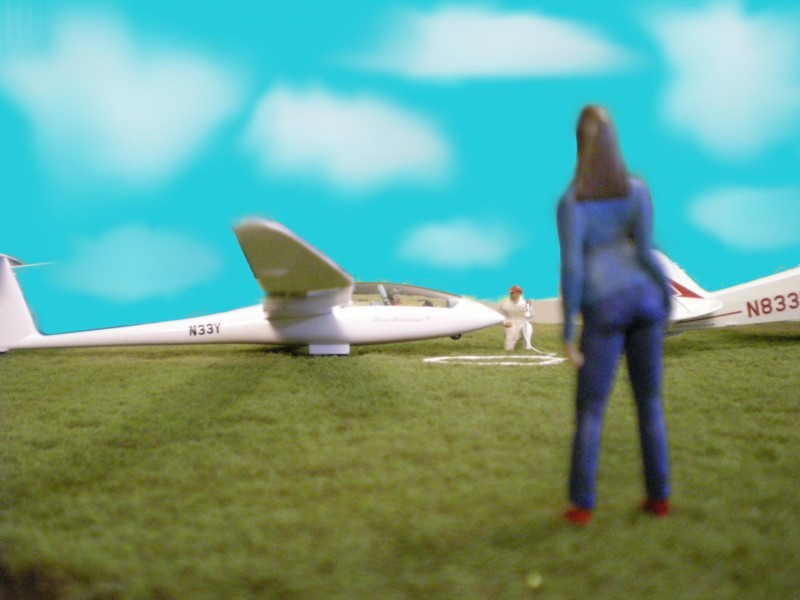
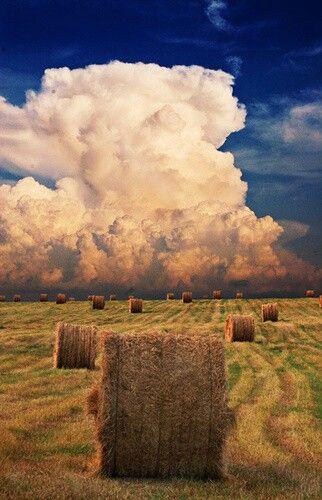
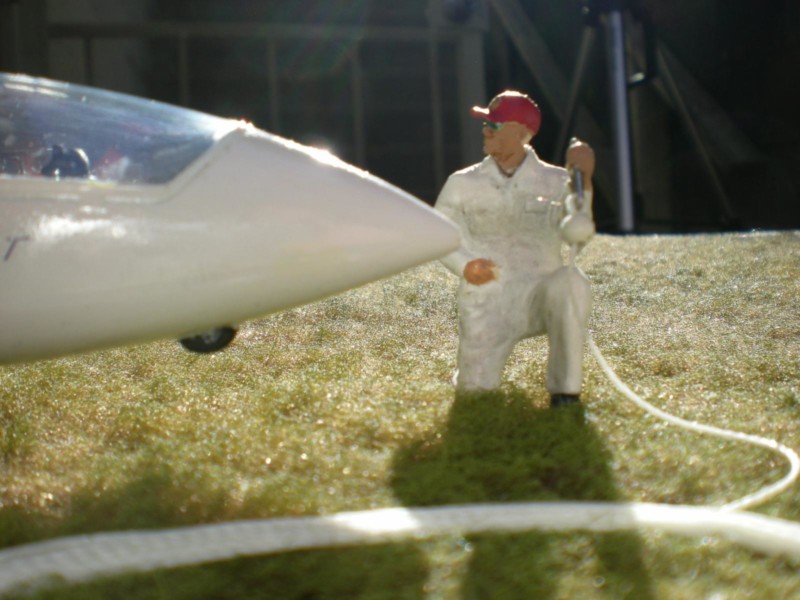
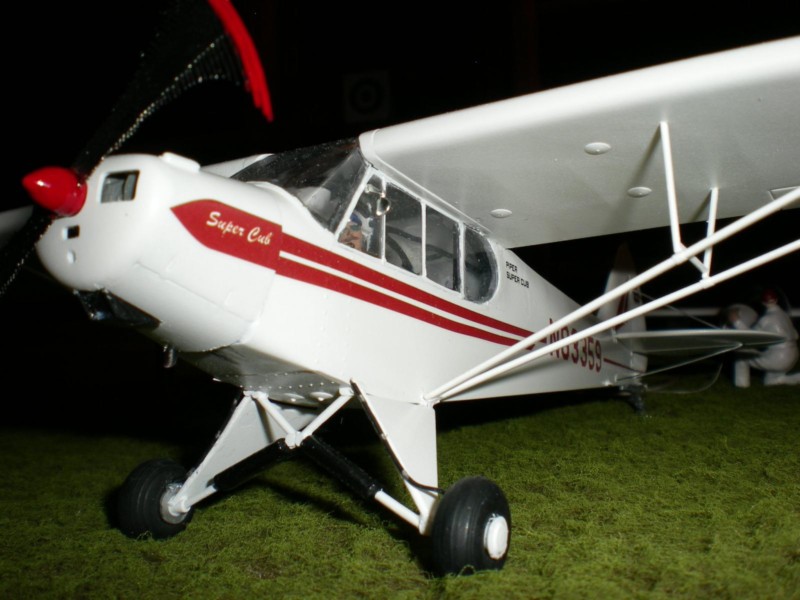

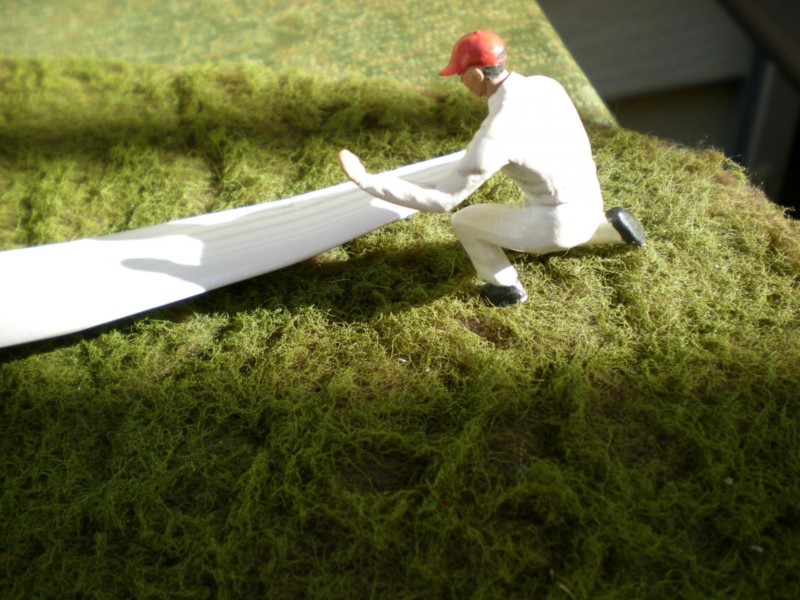
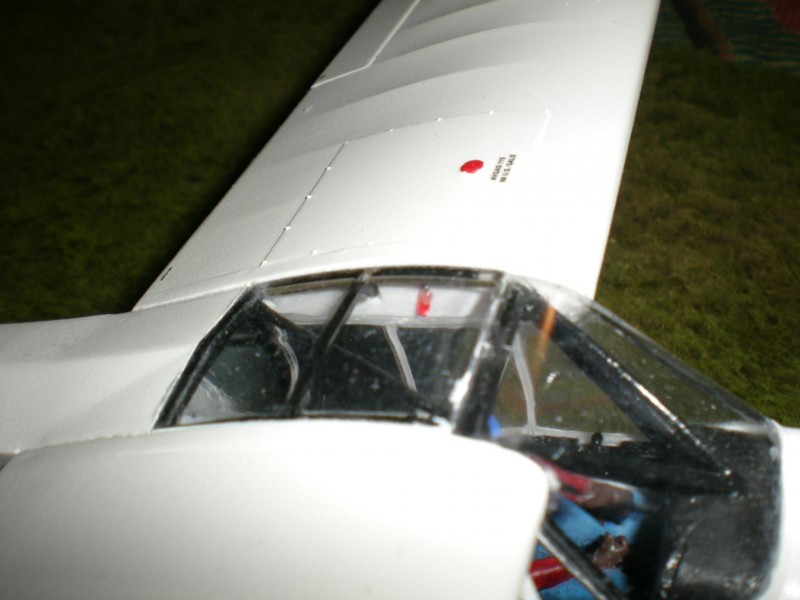
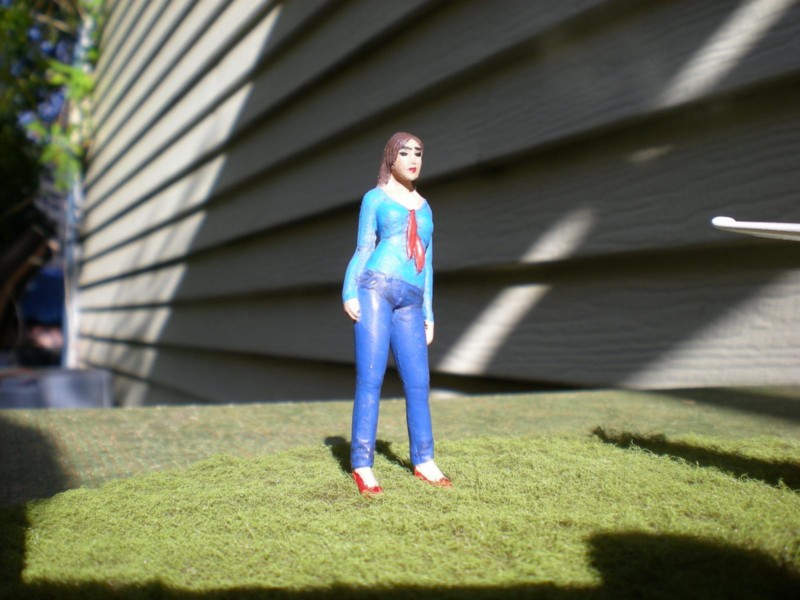

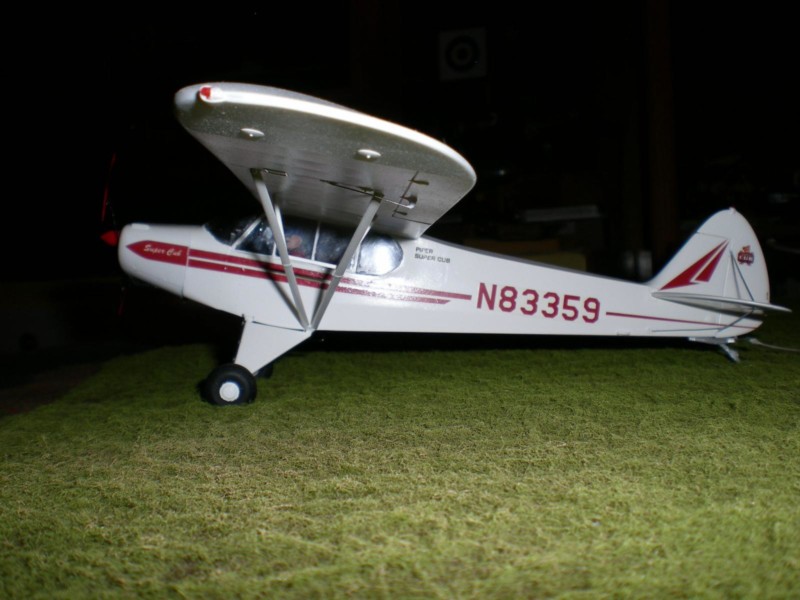
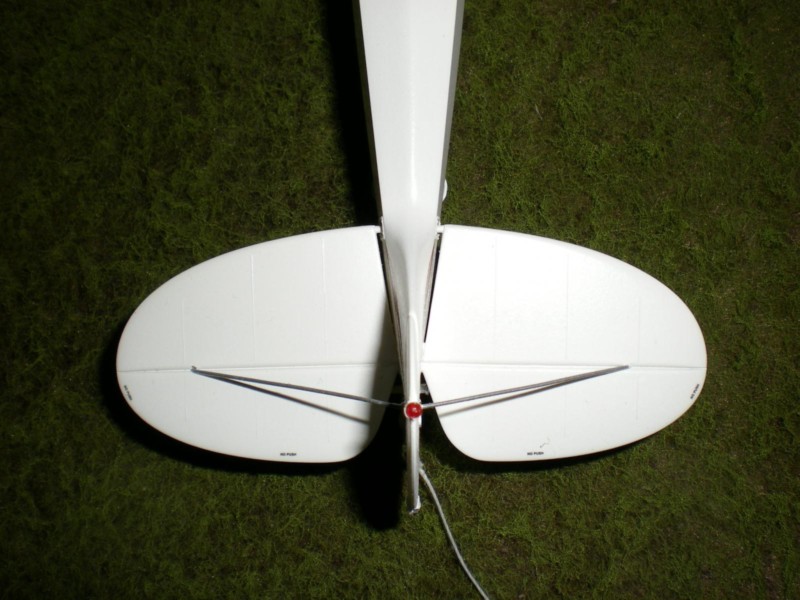
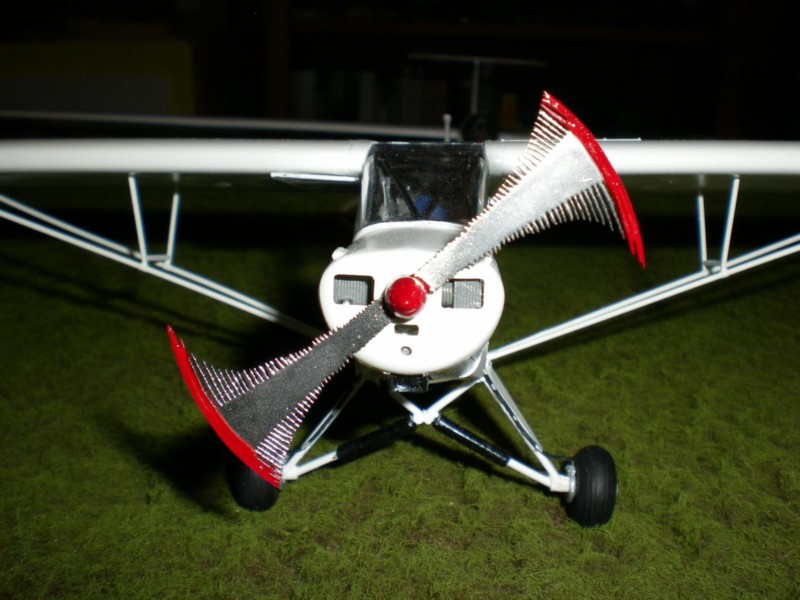

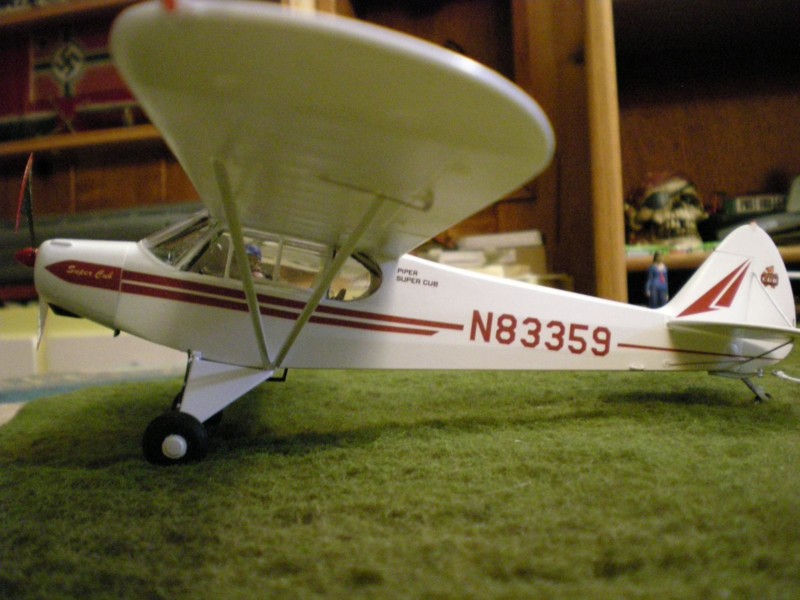
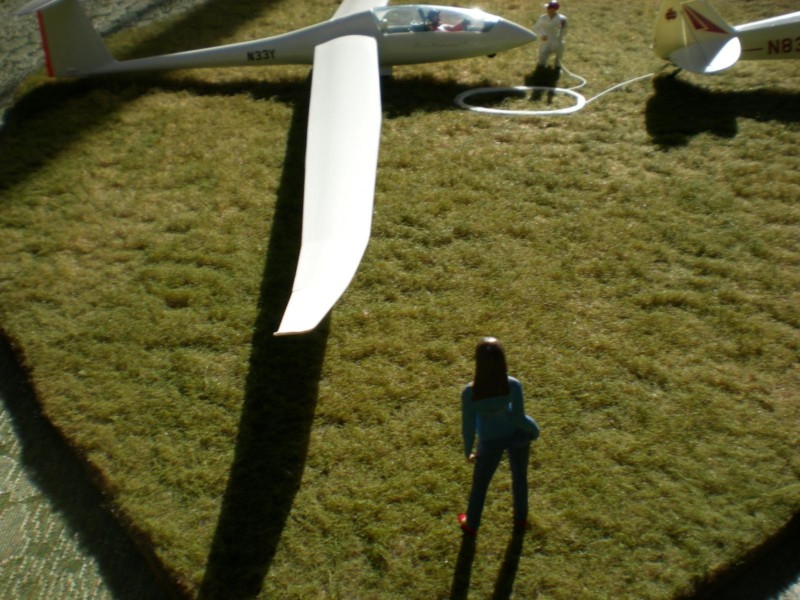
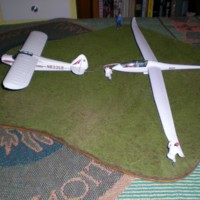
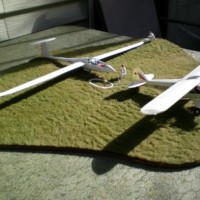
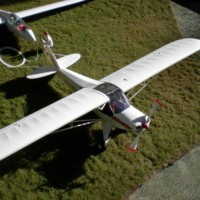
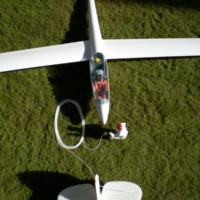


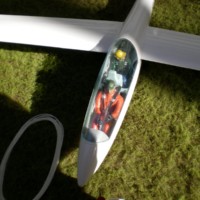
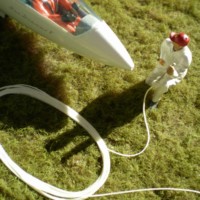
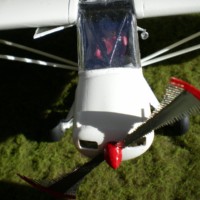
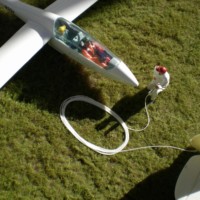

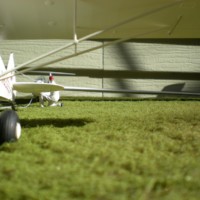


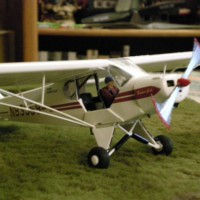

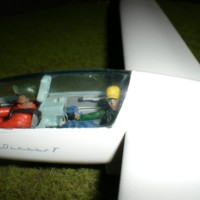
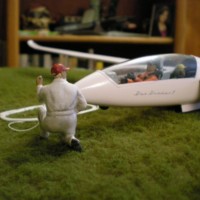
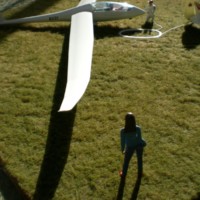
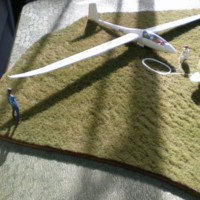
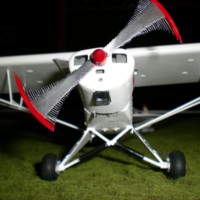
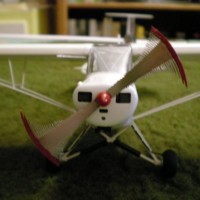
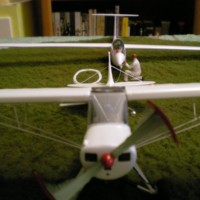


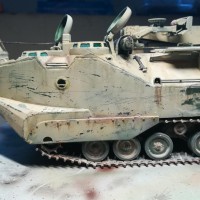
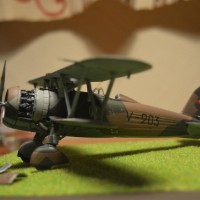

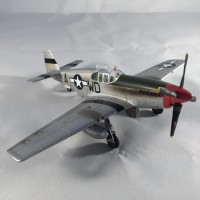
You take us there!
Great story brought to life by your inventive modelling. I thoroughly enjoyed this posting.
Beautiful! I especially like the prop. Interesting technique. I once spent a 3-day weekend watching a bunch of gliders being towed & launched from a field in Germany while our tanks were "hidden" in the woods during a readiness exercise. I used quote marks on the word "hidden" because hiding a tank is often like trying to hide a whale in a delicatessen!
Beautifully done, Mr. Ley. (I'm a BIG fan of the humble "Cub" in all it's glory & versions, going back to the original Taylorcraft Cub, which I believe is the Grandfather of them all.)
Mr. Piper was quite the salesman/promoter while Mr. Taylor was quite the designer. It's obvious who would wind up with the Cub's iconic name derived from sales figures.
I owned a T-Cart for a while in Alaska, 85 raw horses screaming over the bush scaring the bunnies. I much prefer the Cub's tandem, center line seating and stick over the bench seating and wheels of the T-cart so "you can drive it just like a car."
The book's title is "Stick and Rudder" not "Wheel and Rudder", that sounds like a boating book, Besides, If I wanted a car I would have flown one to the airport.
That's odd, we once hid our gliders in the woods while the army towed their tanks nearby. I was surprised they could actually get them airborne.
Interesting narrative indeed...and equally nice builds to accompany the post. Nice all-around job, sir.
You made my day... great story and an equally great build, nicely done.
Happy to oblige.
Nice modelling and a great story G. Nothing like a dead stick landing to get the adrenaline pumping hey. Saw Bob Hoover at an air show do a loop and then land an Aero Commander with a dead stick, got my adrenaline running just watching him. My wife bought me a one hour ride with the Caesar Creek Soaring Club in a Schleicher towed by a Piper Pawnee. What a great experience, recommend it to all as a bucket list requirement.
All sailplane landings are "dead stick," so one gets accustomed to a truly final approach. However, it is different in larger aircraft like the Ag Cat, especially at low altitude.
I once pulled out of a field with oil streaming from a ruptured inter-ear oil line on the top cylinder. Fortunately, it was the last pass or I might never have made it.
With only seconds before critical blower bearing failure and the windshield obscured by oil, I chopped the power, pulled my goggles down, stuck my head out the side (fortunately the doors were off at the time) and made a short leap over the telephone lines to land dead stick on an adjoining road. Tight situation, very tight.
Our flagger helped me push the plane onto a field access road before taking the truck back to the operation to get the boss, while I caught my breath and surveyed the damage.
Eventually the boss came out with a new oil line, tools and a five gallon can of seventy weight. We replaced the ruptured line, filled the oil tank, cleaned the windshield and I flew the Cat back to the operation to wash the plane. If a small scale model of the Ag Cat is ever produced, I might try that roadside repair for a diorama.
Marc Barris built a beautiful 1/32 Pawnee Brave from scratch, but I am not that brave. I need molded polystyrene for inspiration. Artists like Mr. Barris humble kit guys like me. (http://imodeler.com/2017/05/piper-pawnee-brave-375-132-scale-scratch-built/)
Fortunately, I never had to make a dead stick in a really big aircraft like the C-47.
Enjoyed it very much, both, the story and the diorama!
Very nice model and setting! Congrats!
Picture that tells the story! West Point, huh? You should have given him a map and a compass. Hours of fun!
Gliders are really pretty, thinking I might get me one.
Full or scale? At this point, soaring is the only non-cattle car flying I would actually pay for, outside maybe a flight in an Me -262 reproduction over at Paine Field.
Girls are really pretty too! I once thought I might get one. Turns out they are a lot like those aluminum mistresses of the sky.
High maintenance! Lotsa money, plus drama. As to the glider, 48th is my scale of choice, and I don't usually see gliders, though I'm sure there are probably East European ones out there.
Enjoyed it all! Great modeling and story telling combined. What a hobby...!
Great story! and a very nice build
Great story, great modeling, super diorama.
My first 10 hours were in a J-3 cub, flying from a duster strip in Natomas CA north of Sacramento, the shortest, narrowest strip around (I hear today it's been overgrown by the city and is now part of a shopping mall 🙁 ). You really realized the air was an ocean in that little bird. Jittering over the cornfield, big bounce from the exhaust gases as you went over I-880, get all lined up on final... and a nice big Ag-Cat would make a downwind takeoff, and you go fluttering off over the cornfield to get away. Fun times.
Downwind, takeoffs and wheel-landings are standard in ag work. One always lands in the direction of the loading platform, no matter the wind direction. In fact the standard layout for ag strips runs crosswind to prevailing winds.
I can remember my first time landing into the wind. The operator stormed up to the plane shouting "what the hell do you think your doing?"
Mystified, I asked, what are you talking about?"
He continued raging, "Why are you taxiing around like that? Land towards the pumps! I don't want any more time and fuel wasted taxiing around!".
After that, I never paid any attention to wind, outside its effect on drift in the fields. I once curled a set of prop tips landing downwind in a gusting 20kn breeze. It felt like the tail was momentarily lifted, but it might have been the braking required to haul the aircraft down on the short strip.
After flying off ag strips, conventional airport runways can be landed span wise.
Very very nice, both story and build. Thank you.